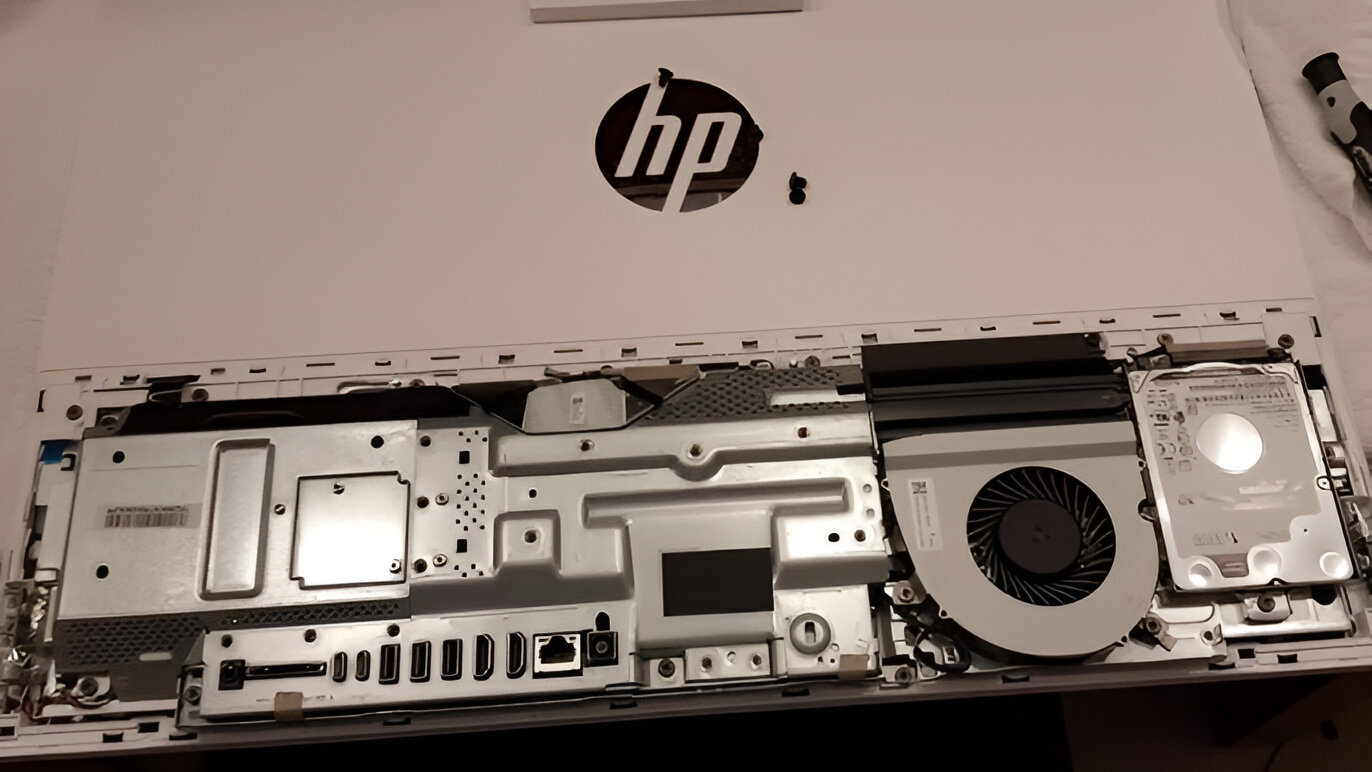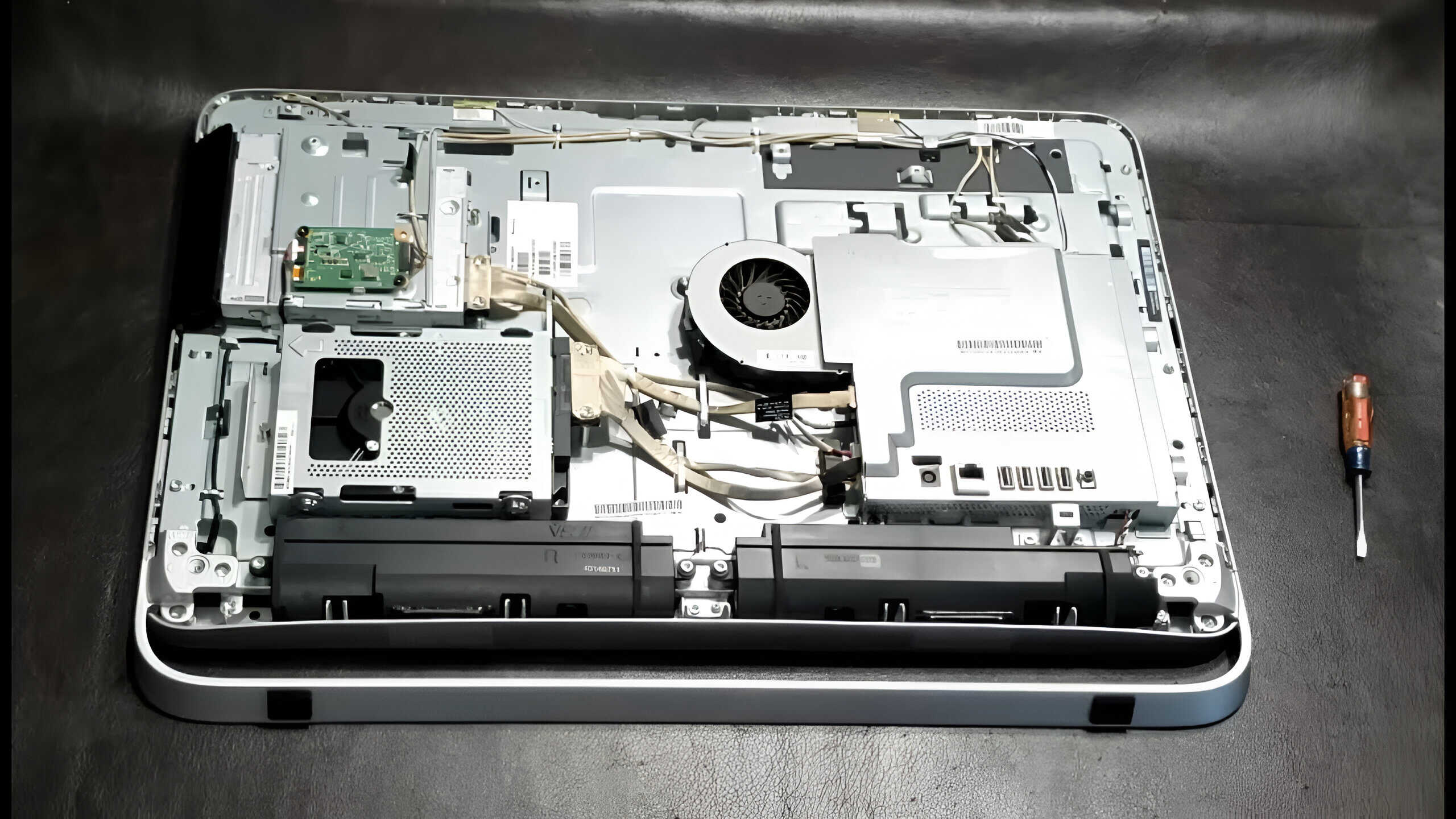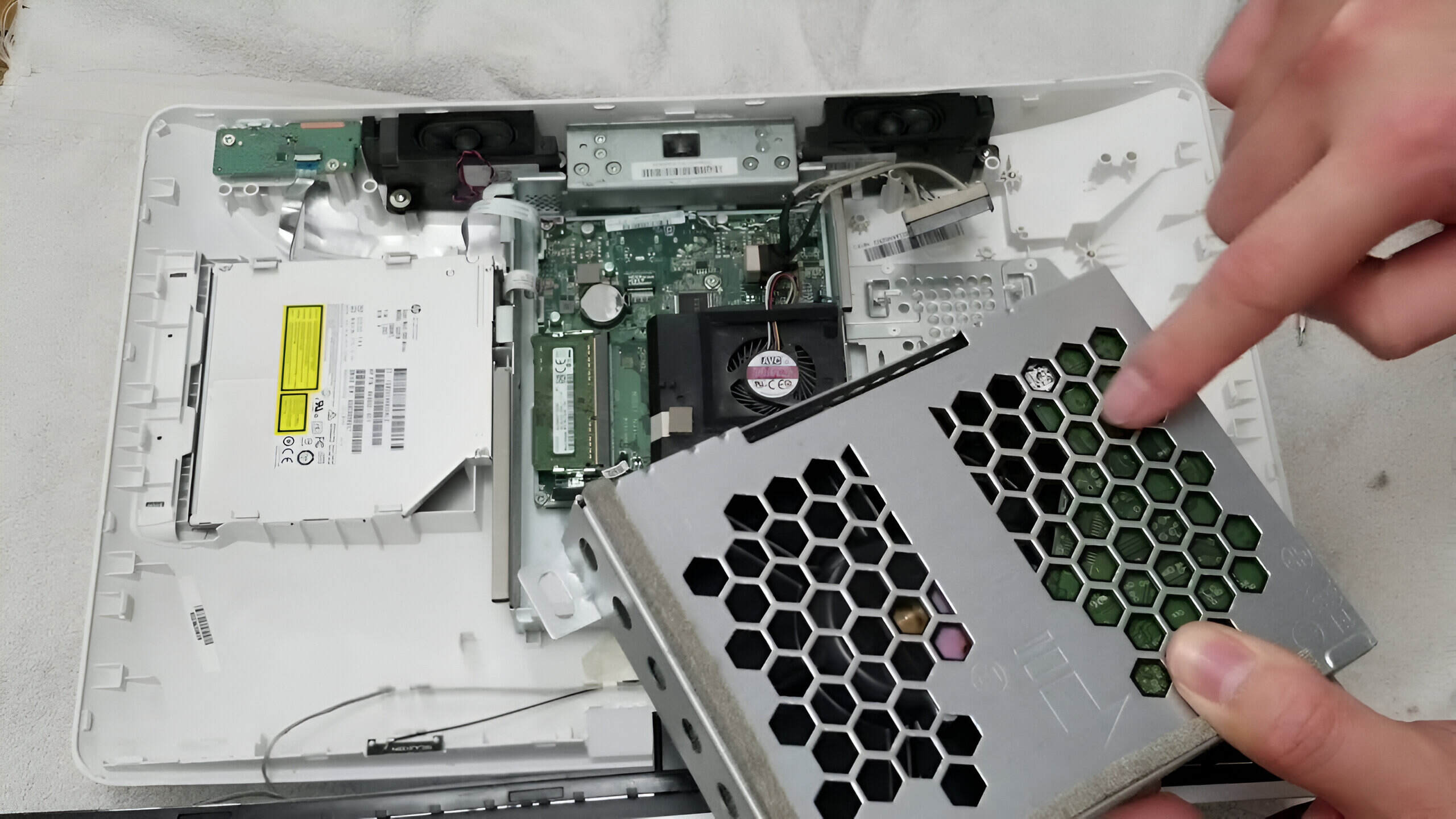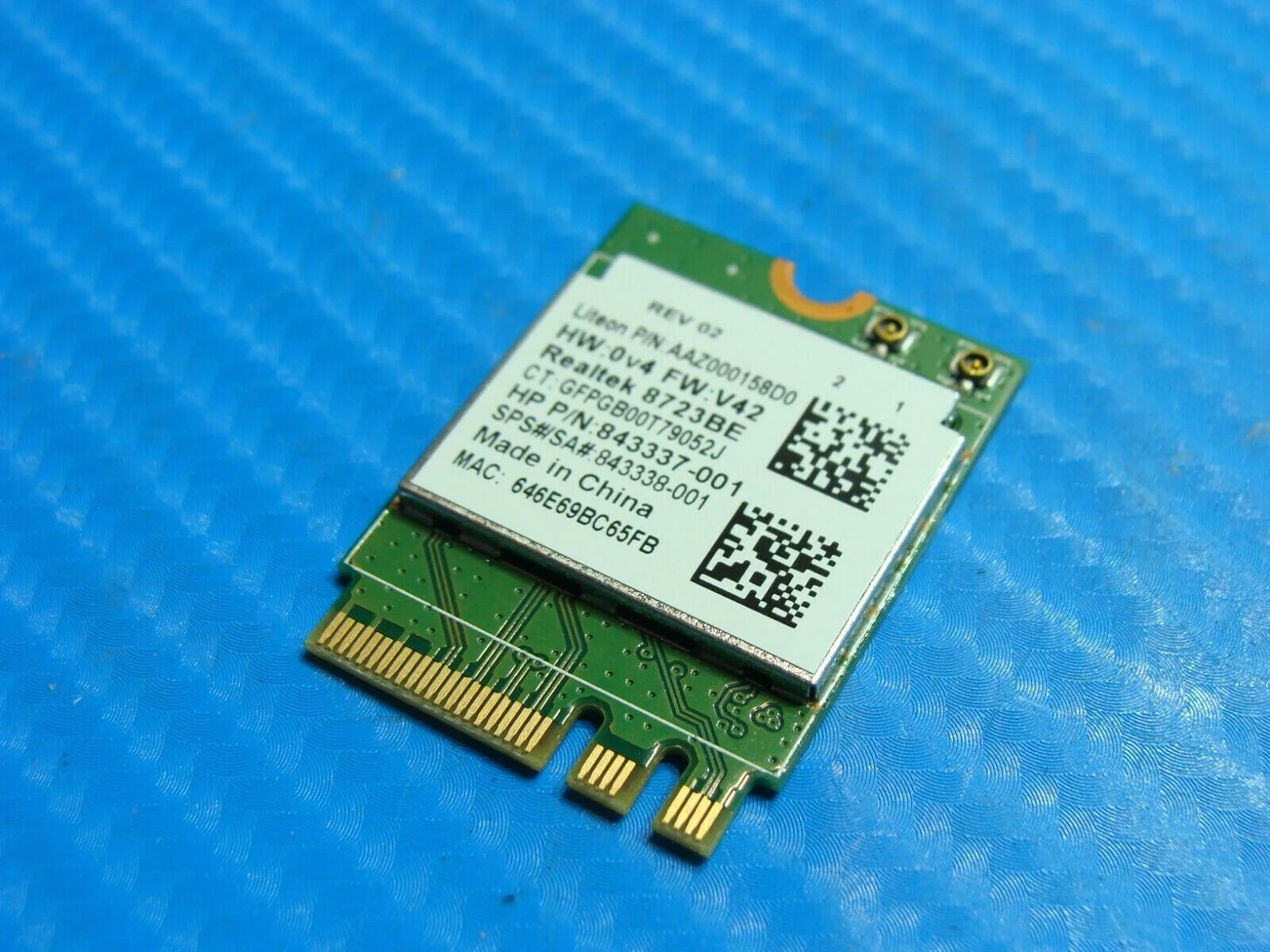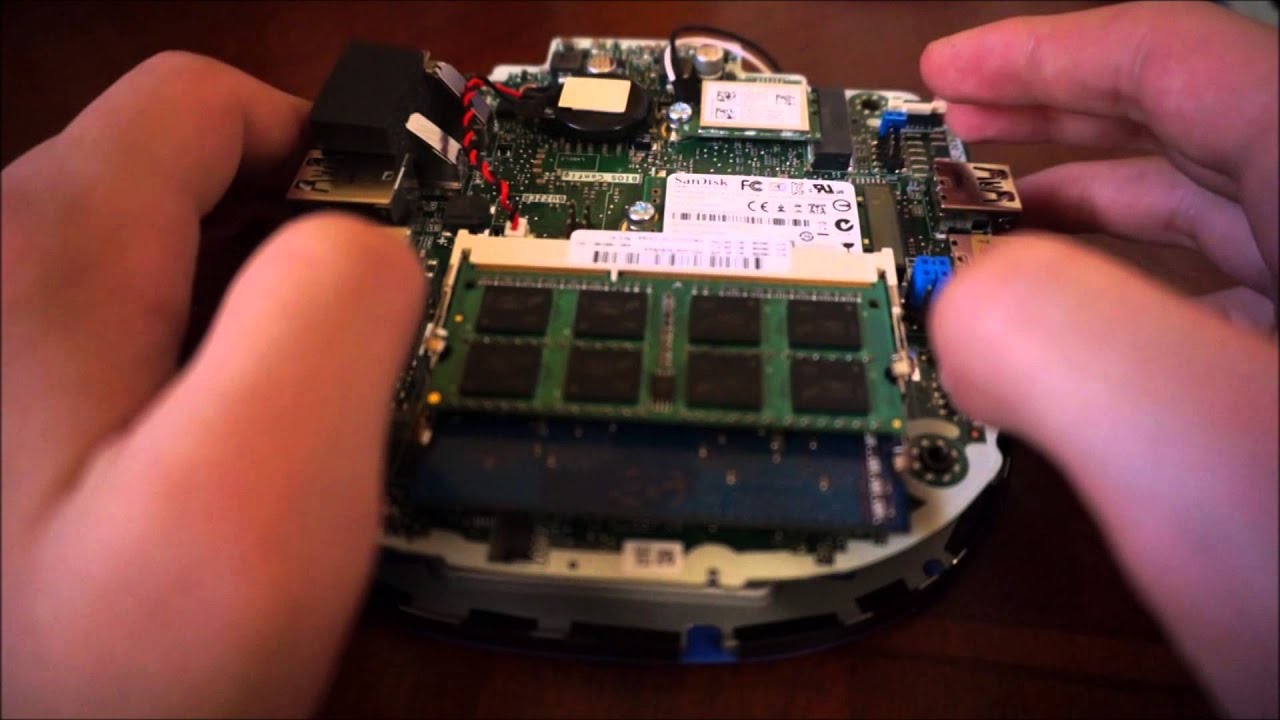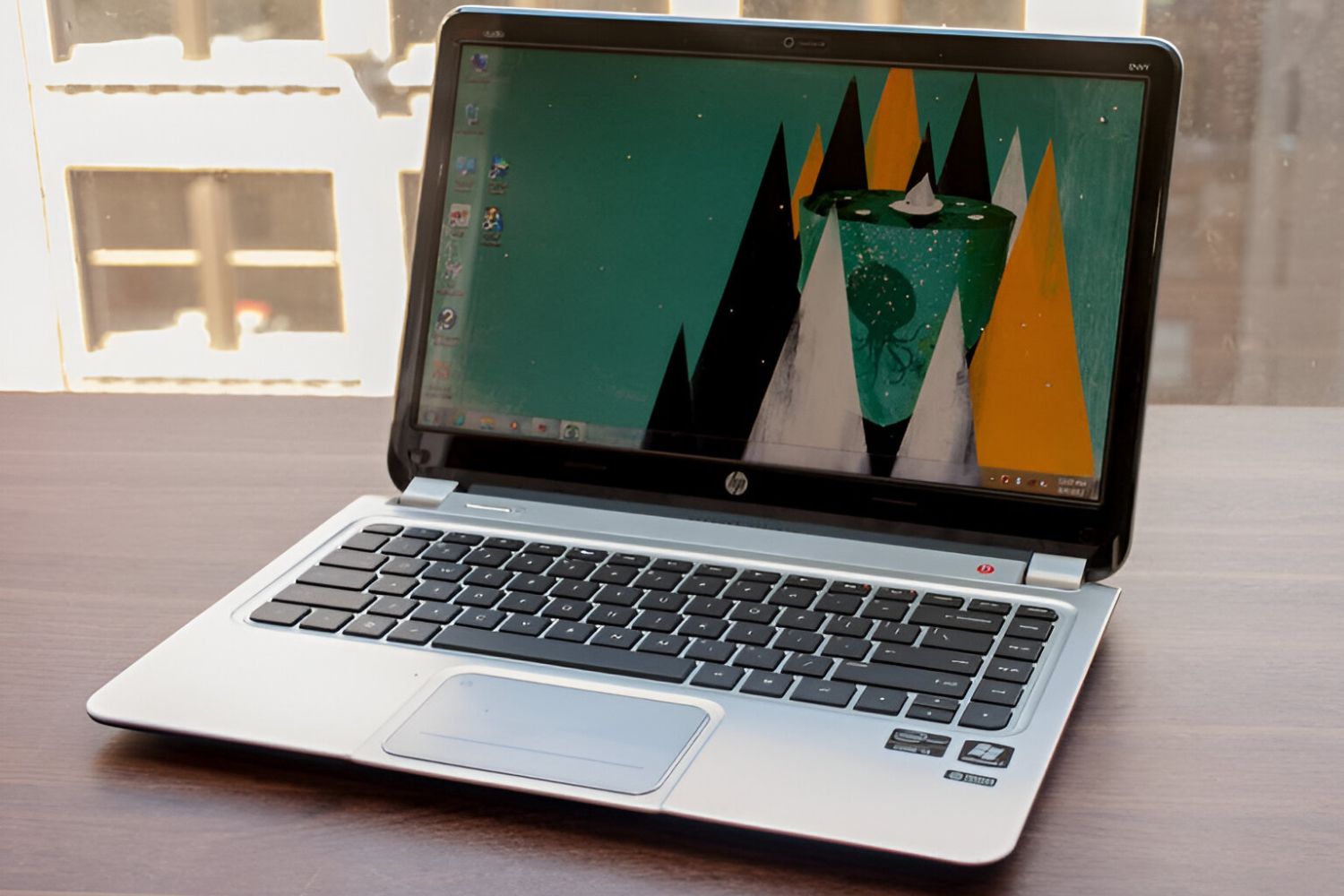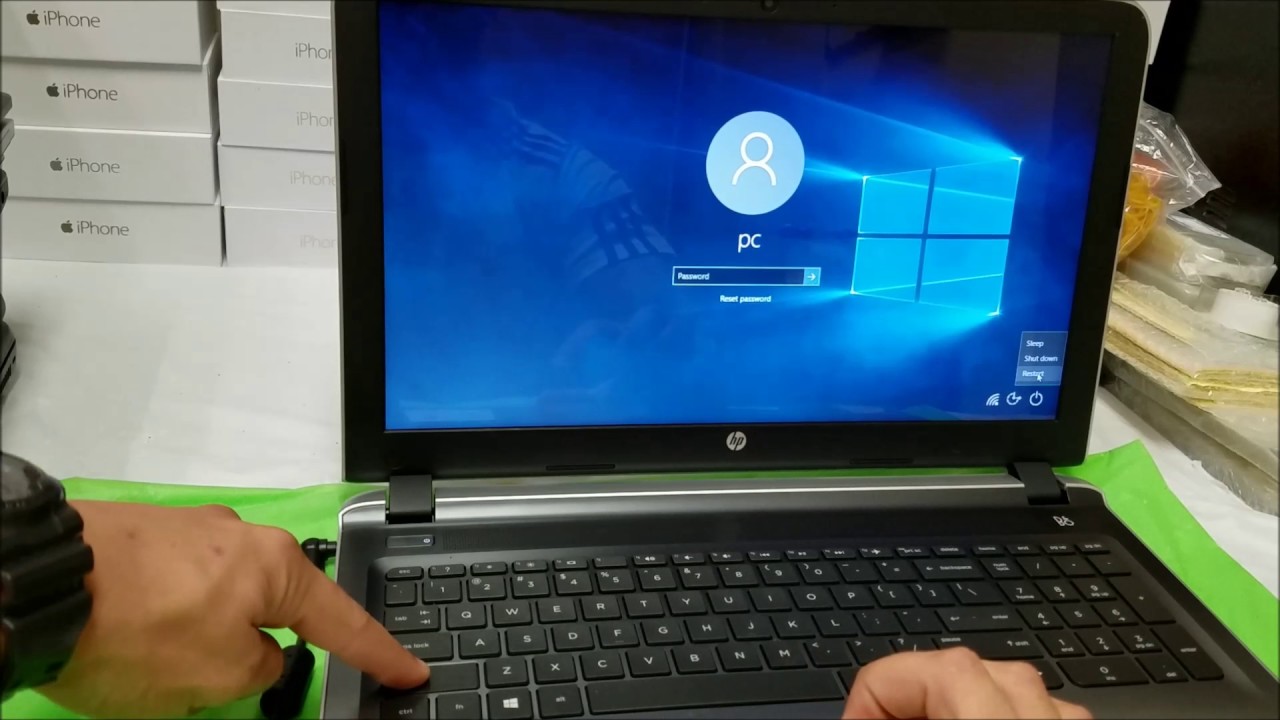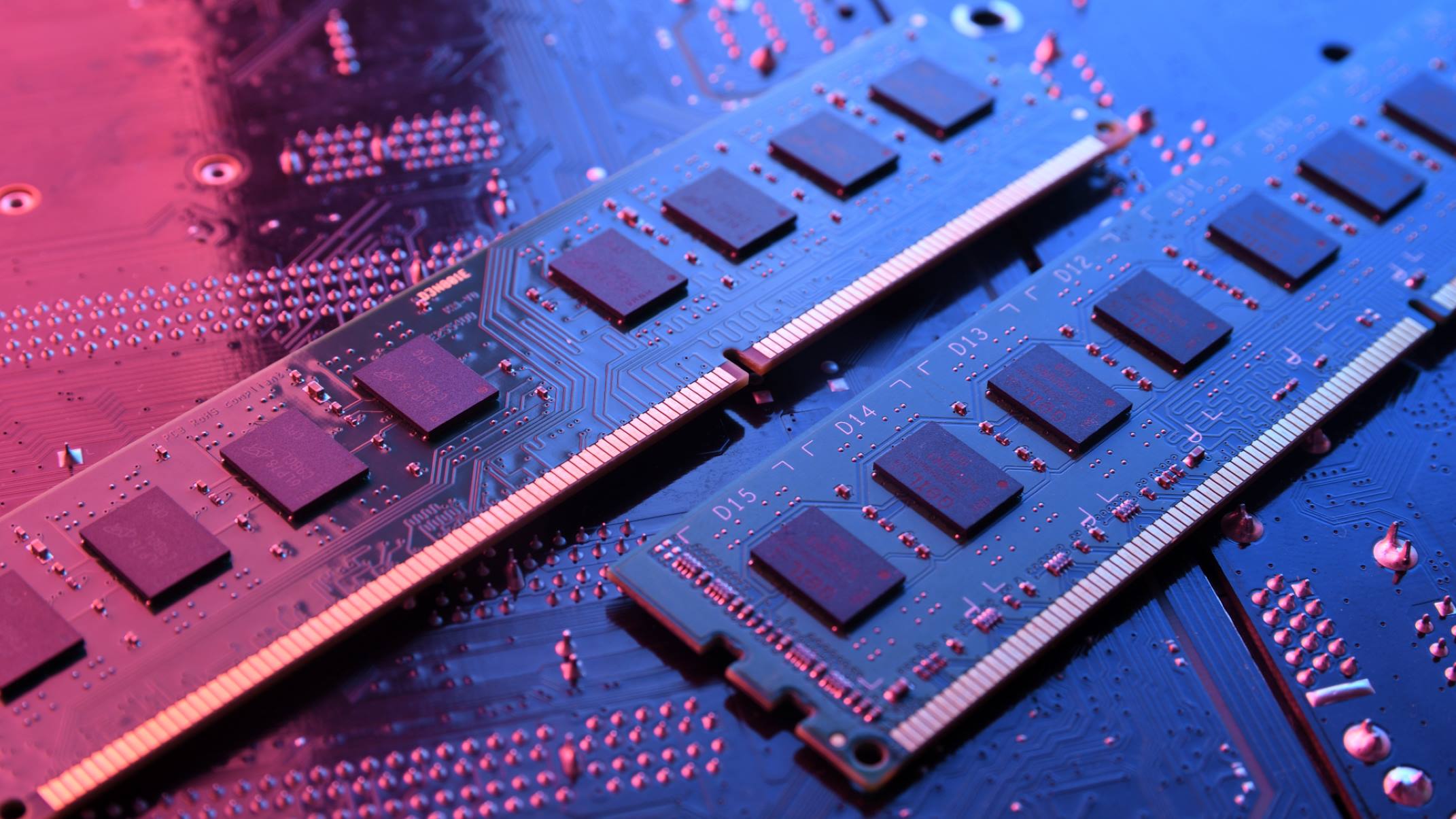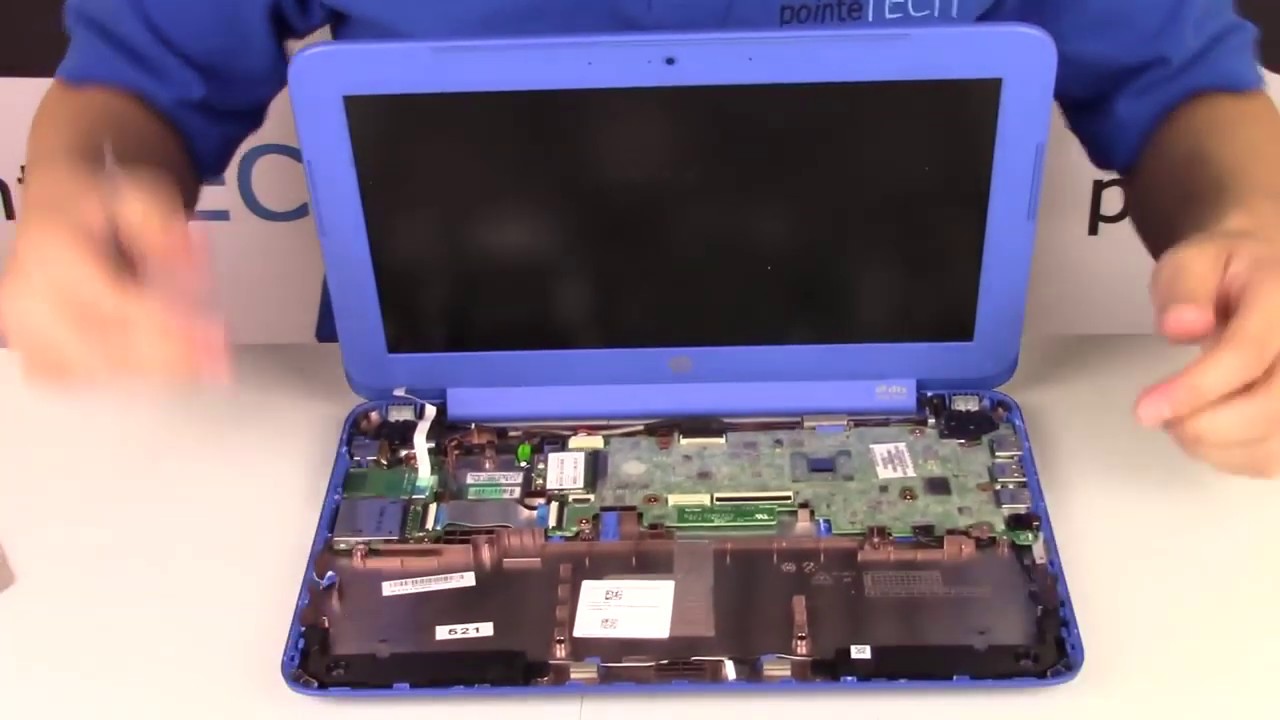Introduction
Removing the back cover of an HP All-In-One PC can be a daunting task, especially if you’re not familiar with the inner workings of computers. However, with a little patience and the right tools, you can easily access the internal components for cleaning, upgrading, or troubleshooting.
Whether you’re a tech-savvy individual or just a curious user looking to explore the insides of your PC, this step-by-step guide will walk you through the process of safely removing the back cover of an HP All-In-One PC. By following these instructions, you can gain a deeper understanding of the hardware and easily perform maintenance tasks that will keep your PC running smoothly.
It’s important to note that opening your computer and tampering with its internal components may void your warranty. Therefore, it’s always recommended to consult the manufacturer’s guide or seek professional assistance if you’re unsure about any steps or feel uncomfortable performing the procedure.
Before starting, ensure you have the necessary tools and materials on hand. These will include a screwdriver set with various sizes, an anti-static wrist strap (optional but recommended), and a clean, static-free work surface. Once you’re prepared, you can proceed with confidence and get ready to unveil the inner workings of your HP All-In-One PC.
Tools and Materials Needed
Before you embark on removing the back cover of your HP All-In-One PC, it’s essential to gather the necessary tools and materials. Having these items at hand will ensure a smooth and successful process. Here’s what you’ll need:
- Screwdriver set: Make sure you have a screwdriver set with various sizes, including both flathead and Phillips head screwdrivers. This will enable you to handle different types of screws that may be securing the back cover.
- Static-free work surface: It’s important to work on an appropriate surface that will prevent static electricity buildup and protect sensitive computer components. Place a non-conductive mat or an anti-static bag on your work surface to create a safe working environment.
- Anti-static wrist strap: While not mandatory, an anti-static wrist strap can provide an extra layer of protection against static discharge. It helps in grounding your body to prevent accidental damage to internal components caused by electrostatic discharge.
- Clean cloth or compressed air: It’s always a good idea to have a clean, lint-free cloth or compressed air canister on hand. This will come in handy when removing any dust or debris that may have accumulated inside the PC during the process.
- Optional: User manual or online resources: Although not a physical tool, having the user manual or access to online resources specific to your HP All-In-One PC model can be incredibly helpful. These resources can provide detailed instructions and diagrams to guide you through the process.
By having these tools and materials prepared, you’ll be well-equipped to tackle the task of removing the back cover of your HP All-In-One PC. Ensuring you have everything you need beforehand will save you time and make the process more efficient.
Step 1: Safety Precautions
Before you dive into the process of removing the back cover of your HP All-In-One PC, it’s crucial to prioritize safety. Taking the necessary precautions will help ensure your personal safety and prevent any accidental damage to the computer. Follow these safety guidelines before proceeding:
1. Power off and disconnect all cables: Make sure to shut down your computer properly and disconnect all cables, including the power cord, peripherals, and any connected external devices. This will eliminate the risk of electric shock and protect both you and your PC.
2. Ground yourself: To prevent static electricity discharge, it’s important to ground yourself. You can do this by wearing an anti-static wrist strap or by touching a grounded object, such as a metal table or unpainted metal surface, before touching any internal components of the PC.
3. Work in a well-ventilated area: Depending on the age and usage of your PC, dust and debris may have accumulated inside. These particles can be harmful when inhaled. Working in a well-ventilated area or using a dust mask can help protect your respiratory system.
4. Be gentle and cautious: When handling the computer components, be gentle and avoid applying excessive force. Some internal parts are delicate and can be easily damaged. Take your time and proceed with caution.
5. Keep track of screws and components: Throughout the process, it’s essential to keep track of the screws and components you remove. Consider using a small container or a magnetic tray to keep them organized. This will prevent losing any small parts and make reassembly easier.
By adhering to these safety precautions, you can minimize the risk of accidents and ensure a smooth removal process. Remember, if you feel uncomfortable or unsure at any point, it’s always best to seek professional assistance or consult the manufacturer’s guide for specific instructions.
Step 2: Shut Down the Computer and Disconnect All Cables
Before you begin removing the back cover of your HP All-In-One PC, you need to properly shut down the computer and disconnect all cables. This step is crucial to ensure your safety and prevent any damage to the PC. Follow these instructions:
1. Save your work and close all programs: Before shutting down your computer, save any unsaved work and close all open programs. This will prevent the loss of any important data and ensure a smooth shutdown process.
2. Shut down the computer: Once you’ve saved your work, go to the Start menu and select the shutdown option. Allow the computer to fully shut down before proceeding to the next steps.
3. Unplug the power cord: Locate the power cord connected to the back of your HP All-In-One PC and unplug it from the power outlet. This will remove any source of electrical power and minimize the risk of electrical shock during the removal process.
4. Disconnect peripheral devices: Disconnect any peripheral devices that are currently connected to your PC, such as printers, external hard drives, or USB devices. Carefully unplug each cable from the appropriate ports on the back or side of the PC.
5. Check for any remaining cables: Inspect the back of your HP All-In-One PC for any additional cables that may still be connected. Some common cables to look for include HDMI or VGA cables for connecting to external displays, Ethernet cables, or audio cables. Disconnect these cables as necessary.
By following these steps, you ensure that the computer is fully shut down and disconnected from any power source or external devices. This will provide a safe environment to proceed with the removal of the back cover in the following steps. Remember to handle the cables carefully to avoid damaging them or their respective connections.
Step 3: Lay the PC on a Stable Surface
Once you’ve shut down your HP All-In-One PC and disconnected all cables, it’s time to prepare a stable surface to work on. This step is important to ensure stability and prevent any accidental damage during the removal process. Follow these instructions to lay the PC on a stable surface:
1. Choose a clean and flat work surface: Select a clean and spacious area where you can comfortably work on your HP All-In-One PC. A desk or table with ample space is ideal for this task. Ensure that the surface is flat and stable to avoid any wobbling or tilting during the process.
2. Place a soft cloth or non-slip mat: To protect the PC’s screen and prevent any scratches or smudges, place a soft cloth or non-slip mat on the work surface. This will provide a cushioned surface for the PC to rest on and help prevent any accidental slipping or sliding.
3. Lay the PC flat on its back: Carefully position the HP All-In-One PC on the chosen work surface with its back facing upwards. Gently lower the PC onto the cloth or non-slip mat, ensuring that it is laying flat and secure. Be cautious to avoid putting excessive pressure on the screen or any other fragile components.
4. Ensure adequate ventilation: While laying the PC on the stable surface, make sure there is sufficient ventilation around the computer. This allows for proper airflow and prevents the PC from overheating during the removal process. Avoid working in cramped or enclosed spaces that may restrict airflow.
By following these steps, you’ll have a stable and secure surface to work on while removing the back cover of your HP All-In-One PC. This ensures that the PC remains steady throughout the process and provides a comfortable work environment. Remember to handle the PC with care to prevent any accidental damage or mishaps.
Step 4: Locate the Screws Holding the Back Cover
Now that you have prepared a stable work surface, it’s time to locate the screws that hold the back cover of your HP All-In-One PC in place. These screws secure the cover and need to be removed to access the internal components. Follow these instructions to locate the screws:
1. Examine the back of the PC: Take a close look at the back of your HP All-In-One PC. You should see a series of screws surrounding the edges of the back cover. These screws hold the cover securely in place. They are usually small and can be either Phillips head or flathead screws.
2. Inspect the corners and sides: Pay close attention to the corners and sides of the back cover. In most cases, you will find screws located in these areas. It’s common for PCs to have screws in each corner as well as additional screws along the sides.
3. Look for any hidden screws: Some HP All-In-One PC models may have additional screws hidden under rubber feet or plastic covers on the back. Carefully inspect the back cover for any removable parts that may be covering hidden screws. Use gentle pressure to remove these covers and reveal the screws beneath.
4. Note the screw sizes and locations: As you locate the screws, it’s helpful to take note of their sizes and locations. This will help ensure that you reattach the back cover correctly later on. You can use a pen and paper or snap pictures to document the positions and types of screws.
5. Count the number of screws: As you find the screws, count and keep track of their total number. This will ensure that you remove all of them before attempting to remove the back cover. Remember, missing screws can make the cover difficult to remove or cause damage.
By carefully inspecting the back of your HP All-In-One PC, you will be able to locate the screws that hold the back cover in place. Take your time to ensure you find all of them and make note of their sizes and locations. This prepares you for the next step of actually removing the screws to detach the back cover.
Step 5: Use a Screwdriver to Remove the Screws
Now that you have located the screws holding the back cover of your HP All-In-One PC, it’s time to remove them using a screwdriver. Carefully following the correct procedure will ensure a successful detachment of the back cover. Follow these instructions:
1. Choose the appropriate screwdriver: Depending on the types of screws used to secure the back cover, select the appropriate screwdriver bit. It may be a Phillips head or flathead screwdriver. Ensure that the screwdriver bit matches the size of the screws to avoid damage.
2. Insert the screwdriver into the first screw: Align the tip of the screwdriver with the first screw to be removed. Apply gentle pressure and turn the screw counterclockwise. Keep a firm grip on the screwdriver to prevent slipping. Slowly loosen the screw while maintaining a steady, consistent twisting motion.
3. Remove the screw: Once the screw is sufficiently loosened, remove it completely by continuing to twist it counterclockwise. Place the removed screw in a secure location, such as a small container or magnetic tray, to prevent misplacement.
4. Repeat the process for all the screws: Proceed to remove each screw, one by one, using the same technique. Work systematically, starting from one corner and moving your way around the back cover. Keep track of the screws as you remove them to ensure they are all accounted for.
5. Store the screws safely: As you remove the screws, it’s important to keep them organized and in a safe place. Consider using a small container with compartments or a magnetic tray to prevent them from rolling away or getting mixed up. Having the screws stored properly will make reassembly easier.
By using a screwdriver and following the correct technique, you can successfully remove the screws that secure the back cover of your HP All-In-One PC. Take your time, work carefully, and ensure that all screws are removed before proceeding to the next step of sliding off the back cover.
Step 6: Gently Slide the Back Cover Off
With the screws removed, you’re now ready to gently slide off the back cover of your HP All-In-One PC. This step requires caution and a delicate touch to ensure a smooth separation without causing any damage to the components inside. Follow these instructions:
1. Ensure a firm grip: Before attempting to slide off the back cover, make sure you have a firm grip on the edges or designated handles, if any. This will provide stability and prevent the cover from slipping or falling off accidentally.
2. Position yourself properly: Stand in front of the PC and position yourself so that you have a clear view and access to all sides of the back cover. This will allow for easier maneuvering and sliding off the cover.
3. Apply gentle pressure: With a firm grip, apply gentle and even pressure on the back cover. Push or slide the cover towards the direction indicated by arrows or handles, if present. Be careful not to force or exert excessive pressure as this could damage the tabs or connectors that secure the cover.
4. Wiggle if necessary: Depending on the model and design of your HP All-In-One PC, you might encounter some resistance while sliding off the back cover. If you encounter any difficulty, try gently wiggling the cover back and forth to loosen it. Continue applying gentle pressure and repeat the motion until the cover starts to slide off smoothly.
5. Slide off the back cover: Once you’ve overcome any resistance and the cover starts to move, continue sliding it off in a slow and controlled manner. Move with caution to avoid any sudden jolts or accidental dislodging of internal components. Take your time to ensure a gradual and complete removal of the back cover.
By following these steps, you can safely and gently slide off the back cover of your HP All-In-One PC. Always exercise patience and be mindful of the delicate internal components. With the back cover removed, you’ll have access to the inner workings of your PC, allowing you to perform maintenance or upgrades as needed.
Step 7: Removing the Back Cover Completely
With the back cover of your HP All-In-One PC partially slid off, it’s time to completely remove it to gain full access to the internal components. Completing this step will allow you to perform various maintenance tasks, such as cleaning dust or upgrading hardware. Follow these instructions to remove the back cover completely:
1. Check for any remaining connections: Before completely removing the back cover, check if there are any remaining connections or cables attached to it. Look for ribbon cables, wires, or connectors that may be securing the cover to the main body of the PC. Carefully disconnect these connections by gently tugging or releasing the tabs.
2. Lift off the back cover: Once all connections are detached, proceed to lift off the back cover. Place your hands on the edges or designated handles, if available, and lift in an upward motion. Ensure a steady grip and maintain control throughout the process to prevent any accidental drops or damage to the cover or internal components.
3. Set aside the back cover: Once you have successfully lifted off the back cover, carefully set it aside on a clean and secure surface. Place it face down to prevent scratching or smudging the inner side of the cover. Store it in a safe place to avoid damage while you perform maintenance or make any necessary upgrades.
4. Inspect the internal components: With the back cover removed, take a moment to inspect the internal components of your HP All-In-One PC. Look for any visible signs of dust, debris, or loose connections. This is an opportune time to clean the inside of your PC using a clean, lint-free cloth or canned compressed air, if needed.
By following these steps, you can confidently remove the back cover of your HP All-In-One PC completely. With the cover off, you’ll have unrestricted access to the internal components, allowing you to perform necessary maintenance tasks or make upgrades easily. Remember to handle the back cover with care and set it aside in a safe location while you work on the internal components.
Step 8: Cleaning the Inside of the PC
Now that the back cover of your HP All-In-One PC has been removed, it’s an opportune time to clean the inside of the PC. Over time, dust and debris can accumulate, potentially affecting the performance and lifespan of the components. Follow these instructions to effectively clean the inside of your PC:
1. Use a clean, lint-free cloth: Start by gently wiping down the interior surfaces of the PC with a clean, lint-free cloth. This will help remove any loose dust or particles from the components and improve overall ventilation. Be cautious not to apply excessive pressure or snag any delicate parts.
2. Use compressed air to remove stubborn dust: For hard-to-reach areas, such as fans, heatsinks, or tight crevices, canned compressed air can be highly effective. Hold the canister upright and use short bursts of air to dislodge any accumulated dust. Take care not to tilt the canister as it may release liquid propellant, which can damage the internal components.
3. Pay attention to fan vents and filters: Fans play a crucial role in cooling the PC, and their vents can become clogged with dust. Use the compressed air to clean out the fan vents, ensuring they are free from blockages. Additionally, check if your PC has any removable air filters. Clean these filters according to the manufacturer’s instructions or replace them if necessary.
4. Inspect and reseat any loose connections: While cleaning, keep an eye out for any loose connections, such as cables or memory modules. Gently press and secure these connections, ensuring they are properly seated. This can help address any performance issues caused by loose connections and improve the overall stability of your PC.
5. Avoid using liquid cleaners: It’s important to avoid using liquid cleaners or any cleaning solutions directly on the internal components of your PC. Liquid can cause damage and even lead to electrical shorts. Stick to dry cleaning methods, such as the lint-free cloth and compressed air, to safely and effectively clean the inside of your PC.
By following these cleaning steps, you can significantly improve the performance and longevity of your HP All-In-One PC. Regular cleaning helps maintain proper airflow, prevent overheating, and ensure the smooth operation of your system. Once you have completed the cleaning process, you can proceed to the next step of reattaching the back cover.
Step 9: Reattaching the Back Cover
After cleaning the inside of your HP All-In-One PC, it’s time to reattach the back cover. This step is crucial to ensure the proper protection and functioning of the internal components. Follow these instructions to securely reattach the back cover:
1. Align the back cover: Start by aligning the back cover with the main body of the PC. Make sure that the edges and corners of the cover align perfectly with the corresponding slots or grooves on the PC. Take your time to ensure a precise fit.
2. Slide the back cover into place: With the back cover aligned properly, carefully slide it back into position. Apply gentle, even pressure to ensure that the cover slides smoothly and evenly. Avoid any sudden jerking or forcing that could damage the cover or internal components.
3. Secure the screws: Once the back cover is fully in place, it’s time to secure it with the screws. Take the screws you removed earlier and insert them back into their respective holes. Start with the corners and work your way around, gradually tightening the screws using a screwdriver in a clockwise motion.
4. Check for a consistent fit: As you tighten the screws, periodically check for a consistent and snug fit of the back cover. Ensure that there are no gaps, wobbling, or unevenness. The cover should be securely fastened, providing optimal protection and stability to the internal components.
5. Do not overtighten the screws: It’s important not to overtighten the screws, as this can put unnecessary strain on the cover or cause damage to the connectors beneath. Tighten the screws until they are snug but do not apply excessive force beyond what is necessary.
By following these steps, you can successfully reattach the back cover of your HP All-In-One PC. Take extra care to ensure a proper fit and avoid overtightening the screws. Once the back cover is securely in place, you can reconnect the cables and peripherals, and power on your PC to resume normal usage.
Conclusion
Congratulations! You have successfully learned how to remove the back cover of your HP All-In-One PC. By following the steps outlined in this guide, you can safely access the internal components for cleaning, maintenance, or upgrading purposes. Remember to exercise caution, be patient, and keep track of the screws and connections throughout the process.
Removing the back cover provides you with valuable insight into the inner workings of your PC, allowing you to troubleshoot issues, improve ventilation, and maintain optimal performance. By keeping your PC clean and free of dust, you can prolong its lifespan and ensure smooth operation for years to come.
When reattaching the back cover, ensure a proper fit and secure it with the screws without overtightening. Take the time to connect any cables or peripherals that were disconnected, and power on your PC to resume normal usage.
If you encounter any difficulties or are unsure about any steps in the process, it is always recommended to consult the manufacturer’s guide or seek assistance from a professional to avoid any damage or voiding of the warranty.
Now that you have gained the knowledge and skills to remove and reattach the back cover of your HP All-In-One PC, you can confidently dive into the world of PC maintenance and customization. Enjoy exploring the possibilities and optimizing the performance of your PC!







